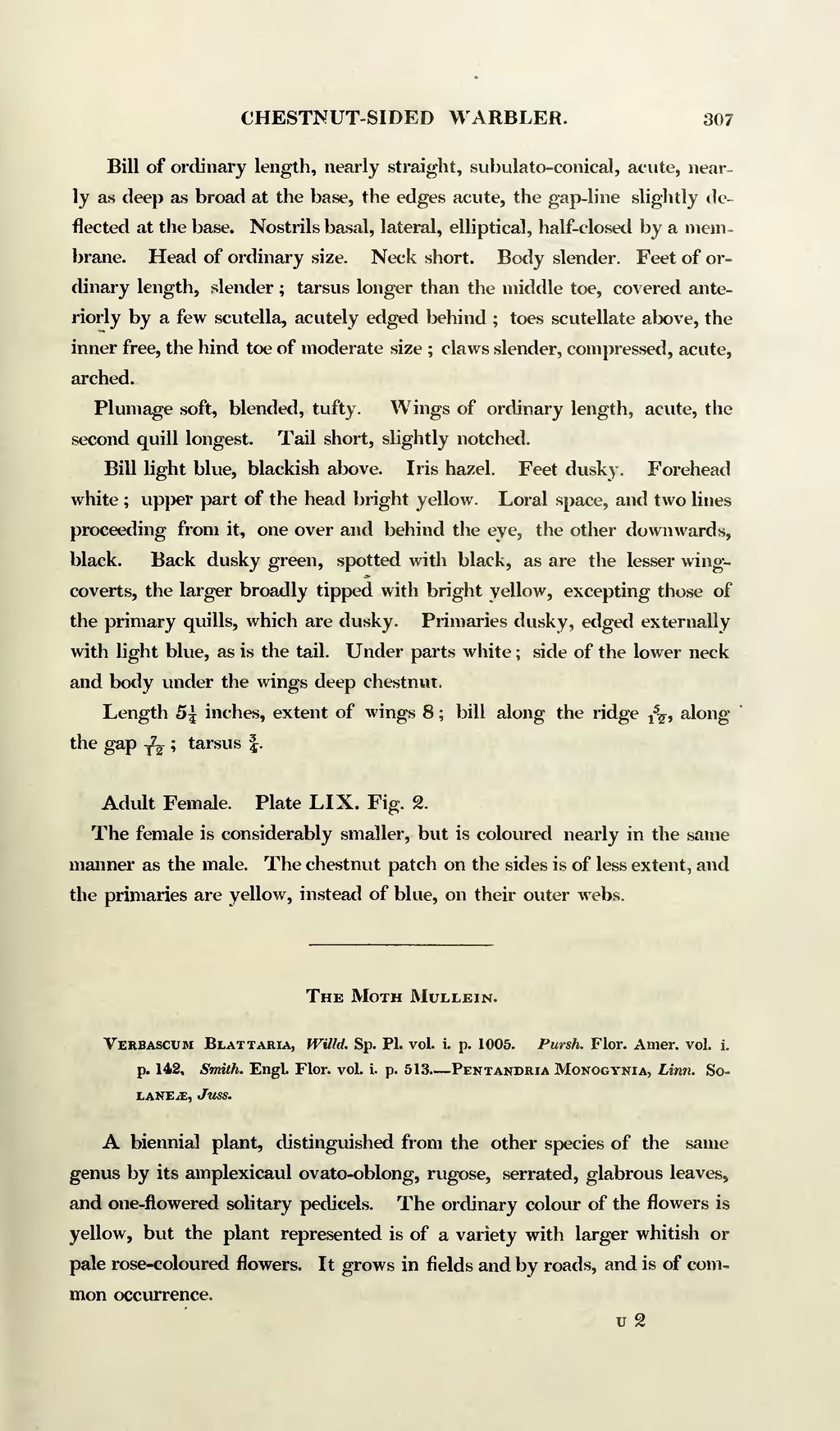Bill of ordinary length, nearly straight, subulato-conical, acute, nearly as deep as broad at the base, the edges acute, the gap-line slightly deflected at the base. Nostrils basal, lateral, elliptical, half-closed by a membrane. Head of ordinary size. Neck short. Body slender. Feet of ordinary length, slender; tarsus longer than the middle toe, covered anteriorly by a few scutella, acutely edged behind; toes scutellate above, the inner free, the hind toe of moderate size; claws slender, compressed, acute, arched.
Plumage soft, blended, tufty. Wings of ordinary length, acute, the second quill longest. Tail short, slightly notched.
Bill light blue, blackish above. Iris hazel. Feet dusky. Forehead white; upper part of the head bright yellow. Loral space, and two lines proceeding from it, one over and behind the eye, the other downwards, black. Back dusky green, spotted with black, as are the lesser wing-coverts, the larger broadly tipped with bright yellow, excepting those of the primary quills, which are dusky. Primaries dusky, edged externally with light blue, as is the tail. Under parts white; side of the lower neck and body under the wings deep chestnut.
Length 5¼ inches, extent of wings 8; bill along the ridge 5/12, along the gap 7/12; tarsus ¾.
Adult Female. Plate LIX. Fig. 2.
The female is considerably smaller, but is coloured nearly in the same manner as the male. The chestnut patch on the sides is of less extent, and the primaries are yellow, instead of blue, on their outer webs.
The Moth Mullein.
Verbascum Blattaria, Willd. Sp. Pl. vol. i. p. 1005. Pursh, Flor. Amer. vol. i. p. 142, Smith. Engl. Flor. vol. i. p. 513—Pentandria Monogynia, Linn. Solaneæ, Juss.
A biennial plant, distinguished from the other species of the same genus by its amplexicaul ovato-oblong, rugose, serrated, glabrous leaves, and one-flowered solitary pedicels. The ordinary colour of the flowers is yellow, but the plant represented is of a variety with larger whitish or pale rose-coloured flowers. It grows in fields and by roads, and is of common occurrence.
